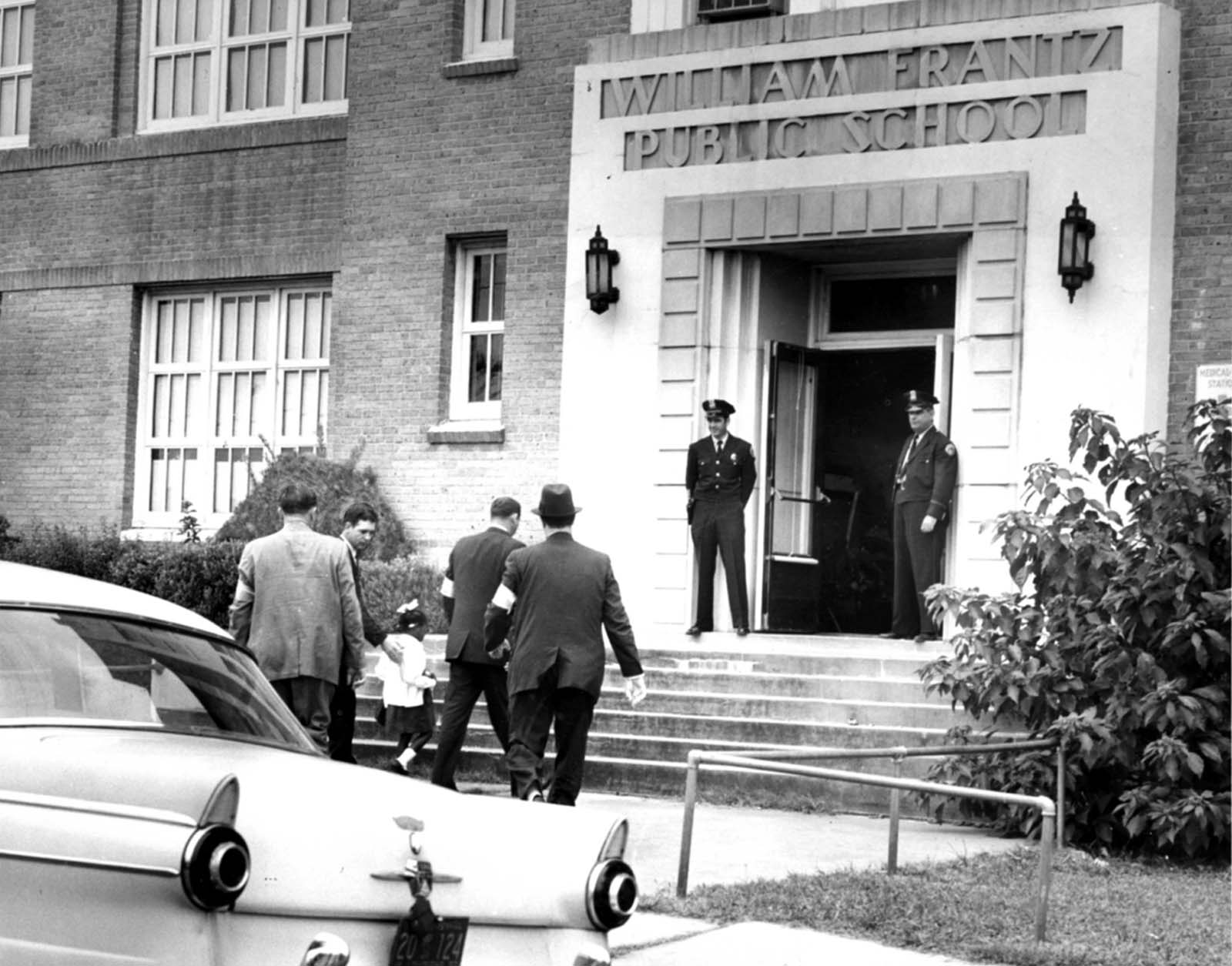On November 14, 1960, Ruby Bridges, six years old, became the first African American child to integrate William Frantz School in New Orleans. Escorted by federal agents, confronted with hostile crowds, isolated in class with a single teacher, she embodied one of the most significant episodes of school desegregation. Her quiet courage marked her era and continues to resonate in American memory.
Tribute to a pioneer of the civil rights movement

American history is filled with powerful images, but few have marked the collective imagination as much as that of a six-year-old Black girl walking toward a white school under federal escort. On November 14, 1960, in New Orleans, Ruby Nell Bridges became the first African American child to integrate William Frantz Elementary School, in the midst of the desegregation crisis.
This act, on the scale of a child, nevertheless altered the moral architecture of a country still reluctant to apply Brown v. Board of Education (1954). Through her, an entire society was forced to confront its contradictions.
Born in 1954, a few months after the Brown v. Board ruling, Ruby Bridges belonged to a generation of children destined to embody the concrete application of a jurisprudence that Southern states attempted to obstruct for years.
In Louisiana, local authorities slowed school integration through various mechanisms: selective tests, administrative maneuvers, and a lack of real enforcement of federal law.
In 1960, six Black children passed the test required to integrate two white schools. Ruby Bridges was the only one assigned to William Frantz Elementary.
The facts are established and documented:
- Ruby, escorted by four U.S. Marshals, walked toward the school amid insults, projectiles, and death threats from white protesters.
- Inside, the boycott was total: all teachers except one refused to teach.
- Barbara Henry, who had come from Massachusetts, was the only one willing to teach her; alone, for an entire year.
This educational solitude is not a literary symbol: it is a historical reality. Ruby spent the first day locked in the principal’s office, the situation being too chaotic to attempt a lesson.
The next day, a Methodist minister, Lloyd Foreman, walked through the crowd to bring his daughter to school, breaking the boycott. This gesture gradually triggered a normalization, although Ruby remained for the most part the only student in her class until the following year.
Archives confirm that the little girl faced uninterrupted hostility:
- A woman threatened every morning to poison her.
- Another showed her a Black doll in a coffin.
- The marshals forbade her from eating anything other than the food prepared at home.
- Recess was denied to her for safety reasons.
To support the child, psychiatrist Robert Coles visited the family home every week. His notes describe a little girl whose resilience astonished even the most seasoned observers.
But the social consequences were severe:
- Ruby’s father lost his job.
- The family grocery store refused to serve them anymore.
- The grandparents, sharecroppers in Mississippi, were evicted from their land in retaliation.
These details, often overlooked, show that school integration not only changed the daily life of a child: it cost an entire family its economic security and peace.
Ruby Bridges remained in Louisiana, continued an integrated education, and worked as a travel agent before devoting herself to education through the Ruby Bridges Foundation, founded in 1999. Its mission: promote tolerance, empathy, and education as a tool against racism.
She sums up her vision this way:
“Racism is an adult disease, and we must stop using our children to spread it.”
Her journey has received numerous official recognitions:
- The Presidential Citizens Medal awarded by Bill Clinton (2001).
- The title of honorary Deputy U.S. Marshal (2000).
- The John Steinbeck Award (2016).
- Her induction into the National Women’s Hall of Fame (2024), alongside Serena Williams.
Her story also inspires various works, including the film Ruby Bridges (1998) and the famous painting The Problem We All Live With, painted by Norman Rockwell in 1964.
In 2011, in front of that work hung near the Oval Office, Barack Obama told her:
“Without children like you, I might not be here today.”
The tribute Ruby Bridges deserves is not that of a frozen icon, but that of a child who stood up to a system larger than herself. Her act was not an act of activism: it was a walk to school. Yet this ordinary gesture cracked a system that saw itself as unshakeable.
Ruby Bridges, a symbol of resistance in segregated America
Her courage was not spectacular; it was quiet. Her walk was not a militant march; it was a walk protected by marshals. Her fight was not public; it played out in an empty classroom, with a single teacher.
It is precisely this modesty of the facts, confronted with the magnitude of their consequences, that gives Ruby Bridges a singular place in American history.
She did not change the country by speaking. She changed it by walking.
Notes and References
Bridges, Ruby (1999). Through My Eyes. New York: Scholastic Press. ISBN 0590189239.
Bridges, Ruby (2009). Ruby Bridges Goes to School: My True Story. New York: Scholastic Press. ISBN 9780545108553.
Bridges, Ruby (2020). This Is Your Time. New York: Delacorte Press. ISBN 9780593378526.
Bridges, Ruby (2022). I Am Ruby Bridges. New York: Orchard Books. ISBN 9781338753882.
Coles, Robert (1995). The Story of Ruby Bridges. Scholastic Press. ISBN 0590572814.
Anderson, James; Byrne, Dara N. (2004). The Unfinished Agenda of Brown v. Board of Education. Hoboken: Wiley & Sons. ISBN 9780471649267.
Summary
Tribute to a pioneer of the civil rights movement
Ruby Bridges, a symbol of resistance in segregated America
Notes and References
